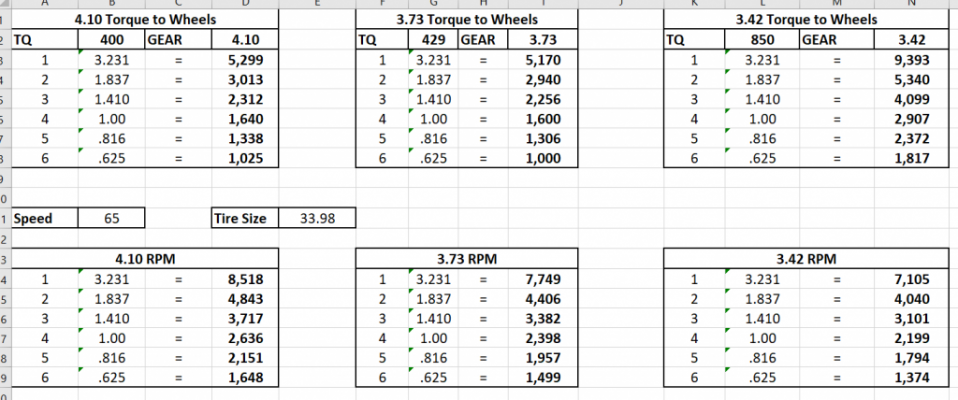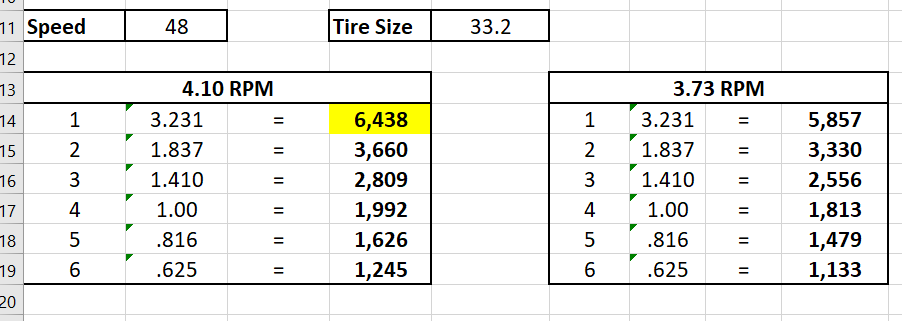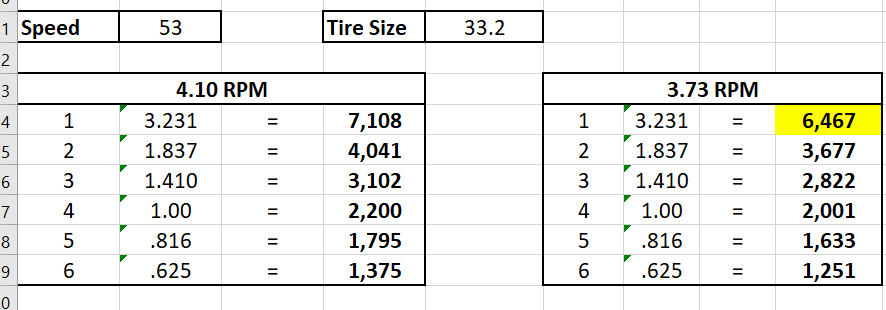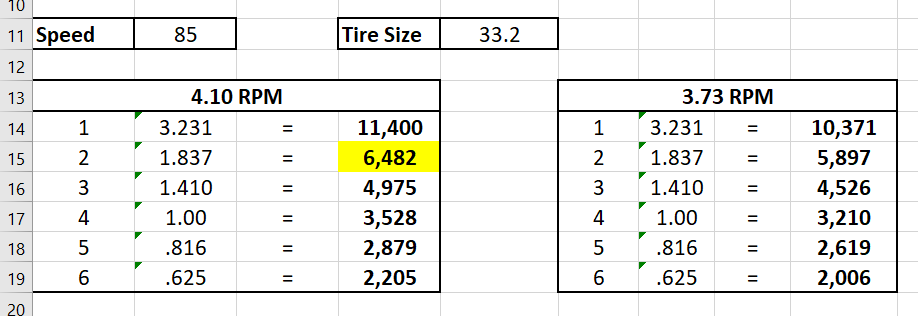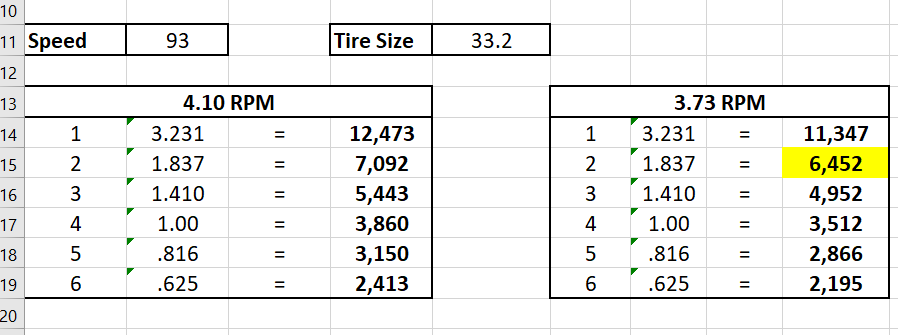Here are the speeds and gears that will get you to 4,300 rpm along with the rpm the 4.10 5.7L would be at.
1st gear(if TC was able to lock) at 35 mph: 6.4L 3.73 is at 4,309 rpm and the 5.7L 4.10 is at 4,737 rpm which is 428 rpm higher.
2nd gear at 61 mph: 6.4L 3.73 is at 4,270 rpm and the 5.7L 4.10 is at 4,694 rpm which is 424 rpm higher.
3rd gear 80 mph(which is way to fast when towing): 6.4L 3.73 is at 4,299 rpm and the 5.7L 4.10 is at 4,725 rpm which is 426 rpm higher.
After this gear, you are going well past the governor of the truck to get to 4,300 rpm with a locked torque converter that is sending 100% of the horsepower to the ground. So in ever case of a 3.73 6.4L being at 4,300 rpm, a 4.10 5.7L is over 400 rpm higher which means some of that horsepower difference is a moot point.
In a passing situation like you are saying? Yes, it is mostly about horsepower. However, in a towing situation of going up a grade, it is a combination of torque and horsepower since the forces pulling you back are increasing and 4.10 5.7L will be putting hundreds of lb-ft more torque to the wheels while a 3.73 6.4L will be putting slightly more horsepower.
I haven't double checked your math because I'm lazy and because it doesn't really do much for my argument.
You're still cherry picking mph and rpms. There will be speeds and rpms where the one truck shifts first, then the other one shifts, then the first one shifts etc; leapfrogging behaviour. There will be many times when the 5.7 has just upshifted and the 6.4 is probably at higher rpms.
It's more clear (to me anyway) when you compare 3.21 vs 3.92 in the 5.7:
6th gear for the 3.21 is a gear ratio of 1 (transmission) * 3.21 (rear) = 3.21
7th gear for the 3.92 is a gear ratio of 0.82 (transmission) * 3.92 (rear) = 3.214
Which means both trucks are putting down identical torque at the wheel in that scenario. They'd be at the same RPM, the same MPH, delivering the same torque, even though the rear end with the 3.92 is signifcantly deeper. That's because even though rear end is deeper in the 3.92, it's running a taller transmission gear, canceling out its advantage.
Which is my point, rear end is combined with the transmission to form your gear ratio. Going back to your cherry picked numbers, the 2n'd gear at 61 mph. Lets say both trucks are still accelerating past 61, what's going to happen? The 5.7 runs out of rpms and upshifts; at that point, the 6.4 probably still has room in 2nd gear so it's putting down a ton more torque after the 5.7 upshifts.
You're also not calculating torque at the wheel in any of this (which again, I'm too lazy to do). But run the numbers and I'm willing to bet that even in your 2nd gear scenario the 6.4 is putting down more torque even though RPMs are lower. Could be wrong there, but again doesn't change my point because trucks dont' hold a single speed, and your numbers are clearly picked to show where the 5.7 is sitting higher rpms above the 6.4 but that isn't the case across the entire range of speed from 0 to 70.


